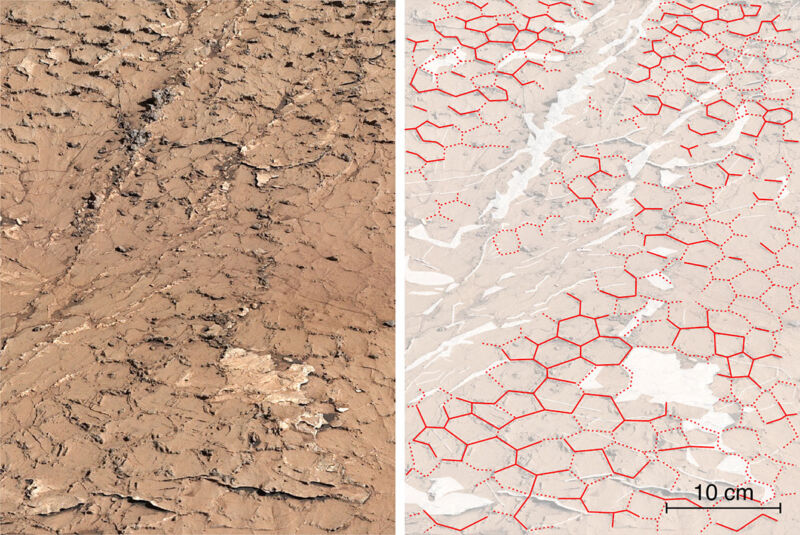
The prodigious evidence for water on Mars has eliminated scientific debate about whether Mars had a watery past. It clearly did. But it has left us with an awkward question: What exactly did that past look like? Some results argue that there were long-lived oceans and lakes on Mars. Others argue that the water largely consisted of ice-covered bodies that only allowed water to burst out onto the surface on occasions.
The picture is further confused by the fact that some or all of these may have been true at different times or in different locations. Creating a clear picture would help shape our understanding of an environment that might have been far more conducive to life than anything that exists on present-day Mars.
A new paper describes evidence that at least one part of Mars went through many wet/dry cycles, which may be critical for the natural production of molecules essential to life on Earth—though they don't necessarily mean conditions in which life itself could thrive.
Putting a hex on Mars
The results come courtesy of Curiosity, the older of the two operational rovers on the planet, which is exploring a site called Gale Crater. About 3,000 Martian days into its exploration, the rover was at a site that dates to roughly 3.6 billion years ago, during Mars' relatively wet Hesperian period. And it came across what would be familiar to gamers as a hex grid: hundreds of hexagonal shaped rock deposits in the area of a few centimeters across and at least 10 centimeters deep.
These features are small enough that they'd be easy to overlook as simply another collection of wind-swept debris on the red planet. But up close, they're striking: large collections of hexagons that share sides, creating a regular grid. While there's some irregularity, the lines separating them largely form three-way intersections with equal angles between each line. And, in places where erosion has had different effects on nearby instances, it's clear that individual hexagons are at least 10 centimeters in height.
Similar shapes have been seen on Pluto, formed by convection of an icy surface. But these are far, far larger, able to be detected from a considerable distance from Pluto. The tiny size of the hexes on Mars is completely incompatible with convection. Instead, it has to be the product of mud drying out, creating cracks as the material contracts.
The water itself could either come externally, in the form of a flood, or via groundwater that soaks up to the surface. But again, the tiny size of these features is decisive, indicating that only the top few centimeters got wet, which is incompatible with a groundwater source. To form the regular, hexagonal shapes also means repeated cycles—experiments show that at least a dozen cycles are needed before you start to get the equal angles at the junction.
So, simply based on their shape, it appears that these hexagons are the product of repeated flooding. The chemistry backs this up. The rocks in the lines that separate individual hexagons are largely a mixture of calcium and magnesium sulfates, which will readily precipitate out of water as conditions get drier. These deposits will form harder rocks than the dried mud that comprises the bulk of the hexagons.



3175x175(CURRENT).thumb.jpg.b05acc060982b36f5891ba728e6d953c.jpg)

Recommended Comments
There are no comments to display.
Join the conversation
You can post now and register later. If you have an account, sign in now to post with your account.
Note: Your post will require moderator approval before it will be visible.